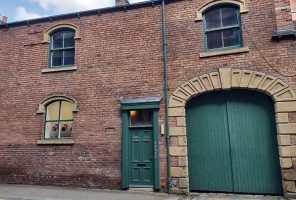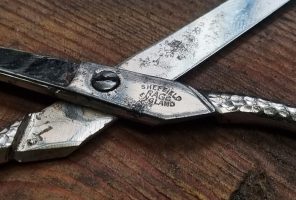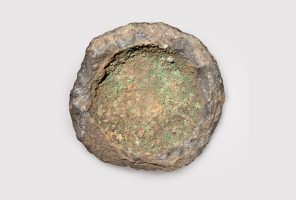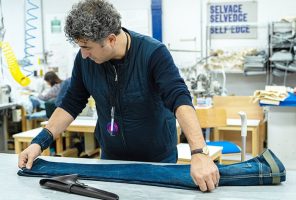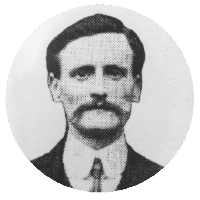

THE FIRST FORGING
This photo shows the new forging of the Kutrite bottom blade. This is the first photo of its kind we’ve been able to show you so far – and what a journey it has taken for us to reach this point! It has been even more rewarding than we had dreamed it would be, but also more complicated than expected.
At the start of this project, all we had to work from was a blank of the original Kutrite top blade from the late sixties, and some finished models from the late sixties and early seventies. These resources helped us work out how the top blade should look, but we were left puzzling over the corresponding bottom blade.
One of the trickiest questions the bottom blade posed was how much steel we should actually take off the blank during the grinding and polishing stages of the scissor-making process. One millimetre of extra steel on one part would require a corresponding adjustment elsewhere.




REdesigning, again and again…
After eight months of discussions and nine design versions, we finally arrived at the definitive drawings to make a plastic model of the Kutrite. After receiving the model, we had to fine tune the design again (and again). Throughout this process, we all shared one goal: to make the model exactly the same as the original.
There comes a moment where you need to stop measuring and calculating, and just rely on the combined experience of all the people involved in a project. This was especially true in our case, as many of our collaborators have been making dies, tooling, forgings, scissors and shears since before we, the business owners, were born. We made that leap of faith, and the dies and tooling for the Kutrite were made last week.
The Kutrite is a particularly difficult pattern of scissors to make, due to the many straight lines in its design. Understandably, then, our die and tooling partner has taken all the time and care needed to get these fundamental components just right, and also to hot drop forge the fine blanks we need to make a perfect reincarnation of the famous flat Sheffield kitchen scissors pattern. This has been a hard road for all parties, but it has brought us to that all-important first bottom blade, forged out of 420B stainless steel.
WHERE DO WE GO FROM HERE?
Making the Kutrite will be a challenge in itself! We probably need a so-called “Snow grinder”, which we have already located in Sheffield, but before we buy this we need to have our hands on the final blanks and to figure out what exactly we need to do to bring this up to our exacting standards.
If all goes well from here on in, and if we can avoid hiccups such as further lockdowns and breakages of tooling, we will have 2,500 pairs of forgings ready to work on by the end of October. We are beyond ecstatic at the prospect.
Furthermore, the first samples of the bespoke wooden boxes for the Kutrite have arrived, so we should soon have all the elements we need to bring these spectacular scissors back into the world.
THE QUESTION REMAINS, WHEN WILL WE HAVE ANY KUTRITE SCISSORS READY TO SELL?
Due to lockdown and an increased appetite for handmade products that has come with it, our order book is ‘bursting’ so currently we have a lot of outstanding orders to fulfil. After the health and safety of our staff, fulfilling these orders has to be our first priority. With that said, we are aiming to get the Kutrite onto our website this November, and we hope to be able to sell and deliver the first 100+ pairs before Christmas 2020.
As we’ve all been reminded over recent months, there are some challenges we cannot influence. But all being well, this is our plan for completing the project to bring back the Kutrite.
The moment we have more news to share, we will share it with you.
With kind regards,
Paul Jacobs





